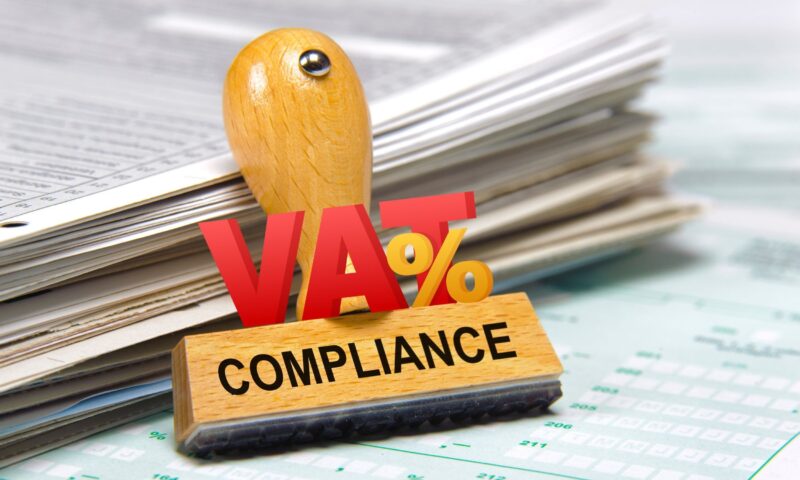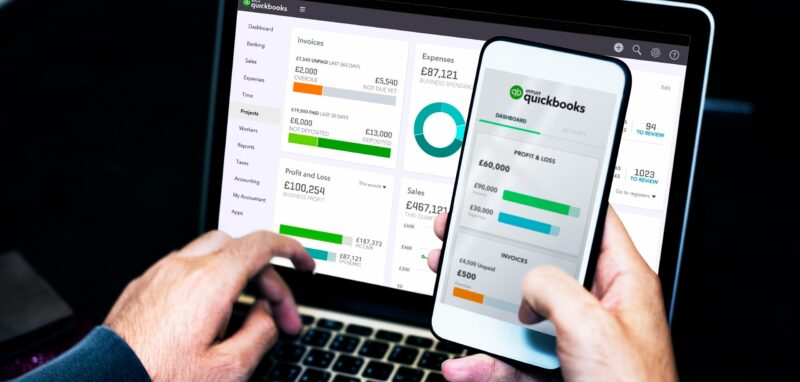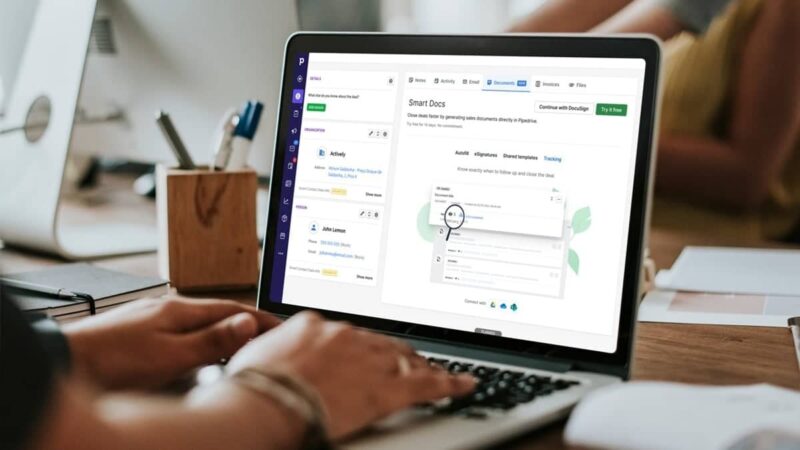If you’ve ever stared at a tax notice wondering where it all went wrong, chances are your invoicing system wasn’t built for compliance. And trust me, it’s not about being careless—it’s that many invoicing tools aren’t designed with real tax rules in mind. They look great, they send PDFs, but when it comes to VAT or audit-proof reporting… crickets.
Freelancer or VAT-registered business, the right invoicing setup isn’t a nice-to-have—it’s what keeps your cash flow clean and your records audit-proof.
Key Takeaways Before We Dive In
- VAT businesses need platforms that do more than add a tax line—they must follow specific structure, fields, and regional formats.
- Non-VAT users don’t get a free pass; your invoices still need to be professional, traceable, and well-organized.
- Good platforms don’t just look nice—they guide you through compliance without making it feel like accounting school.
- You don’t need to overpay. Several tools offer solid free versions or affordable plans tailored to business size.
- Look for platforms that grow with you. You might not charge VAT now, but that could change in 6 months.
Why VAT Compliance Is Not Optional—Even for Small Businesses

Here’s something many new business owners don’t realize: a missing VAT number or incorrect tax breakdown on one invoice can lead to rejected filings or lost deductions. That’s money you may never recover. That’s money you may never recover. And this is precisely why a CPA is important for your business, to help you navigate tax regulations, avoid costly mistakes, and ensure everything from invoice formatting to VAT reporting is legally sound.
For VAT-registered companies, your invoice needs to show:
- Your business VAT ID and that of your client (if B2B)
- A unique, sequential invoice number
- Description of services or products
- Net amount, VAT rate, VAT amount, and total
- Invoice date and service/supply date
If that sounds like a lot to keep track of manually—you’re right. That’s why relying on proper software isn’t a luxury anymore.
For non-VAT setups, things are simpler, but there’s still a standard to meet. Clients expect clean, branded invoices with consistent formatting and legible details. Anything less and you start looking amateurish.
The Tools I Recommend for Staying Compliant
Here’s my take on the best invoicing platforms I’ve used, tested, or helped others implement. Each one has its sweet spot depending on your size, location, and whether you handle VAT.
1. QuickInvoice – Clean, Focused, and Built for Simplicity

I came across QuickInvoice while helping a client who wanted something super lean, no 30-tab dashboards. Just easy invoicing with solid compliance. It turned out to be a great fit, especially for non-VAT businesses that may later scale into VAT territory.
What works well:
- Ready-to-use invoice templates that cover a range of needs—hourly services, fixed-price jobs, VAT, non-VAT, etc.
- Straightforward dashboard that shows what’s sent, paid, or overdue without the usual clutter.
- Custom branding tools (logos, color palettes, fields) to help small businesses present themselves like pros.
- Secure cloud access, meaning your documents are always backed up, whether you’re on your laptop or mobile.
My personal take: QuickInvoice isn’t trying to be an all-in-one accounting suite—and that’s actually its strength. It does one job well: creating and sending compliant, professional invoices. If you’re just tired of bloated software, this one feels like a breath of fresh air.
If you’re short on time, their invoice templates are probably the fastest way to get started and look legit—no design or accounting experience is needed.
2. QuickBooks Online – Full-Spectrum, Serious-Mode Tool

QuickBooks is the heavyweight. It’s like the all-terrain vehicle of invoicing platforms—maybe not sleek, but it’ll get you through any terrain. I used it during a cross-border services gig, and it saved me hours during tax season.
Why I like it:
- Automatically handles VAT across dozens of jurisdictions
- Reports are tax-filing ready
- Invoice templates are detailed and easily branded
- Great for accountants and consultants alike
❗Downside: It’s not cheap, and the UI can feel a bit much if you’re just sending five invoices a month.
Best for: Businesses with multiple clients, recurring billing, and complex tax requirements.
3. Zoho Invoice – Surprisingly Good for Free

I’m always skeptical of free tools—but Zoho Invoice genuinely impressed me. I set it up for a friend’s small video production studio, and it handled everything: recurring invoices, reminders, even partial payments.
Standouts:
- VAT can be toggled on/off depending on your client
- Beautiful templates, very customizable
- Built-in time tracking if you bill by the hour
- It’s really free. No credit card, no sneaky trials
If you’re a solo consultant or freelancer not yet into VAT territory, start here. It’s light, fast, and doesn’t overwhelm.
4. Xero – Best for Businesses Operating Internationally
When you’re invoicing clients across borders, you must have something that handles VAT properly in multiple regions. Xero was built for this. I once helped a SaaS company migrate from spreadsheets to Xero—they went from tax panic to calm in one quarter.
Why Xero stands out:
- Built-in EU VAT logic, including OSS/IOSS
- Connects directly to tax authorities for automated filings
- Customizable templates with every tax field you can imagine
- Extremely accountant-friendly
Did you know that a 2023 EU survey showed 22% of small businesses had errors in VAT filings due to invoice formatting mistakes. Xero virtually eliminates that risk.
5. Wave – Lightweight, Ideal for Non-VAT Freelancers

If you’re just getting started—say, selling design services, coaching, or content creation—Wave feels like a natural fit. It’s simple and clean, and you can issue invoices in under two minutes.
What I love:
- No clutter—just invoices, payments, and reports
- Works well with Stripe for online payments
- Templates are simple but professional
- It’s free unless you add premium payments
⚠️ Word of caution: If you start charging VAT later, Wave won’t be enough. It has limited tax features, and upgrading means switching tools.
6. Sufio – E-commerce’s Secret Weapon

Selling on Shopify or WooCommerce? Sufio is built specifically for you. It handles VAT automatically and generates beautifully formatted invoices in multiple languages. I wish more people knew about this tool.
Great for:
- Auto-generating EU-compliant invoices for online sales
- Including buyer VAT ID for B2B transactions
- International customers—multi-currency and translation-ready
- Seamless with Shopify, BigCommerce, etc.
Fun fact: The European Commission estimates VAT fraud in e-commerce accounts for €50 billion+ in losses. Using tools like Sufio can help legitimize your invoices in cross-border transactions.
What to Look For When Choosing Your Invoicing Software
Here’s what I always advise clients to think through when choosing a platform:
- Tax Setup Options: Make sure the platform allows for tax-on or tax-exempt toggles, custom VAT rates, and exemptions.
- Invoice Template Customization: Can you add or remove fields? Is the layout professional? Does it support logo and contact info?
- Automation: Recurring invoices, payment reminders, and tax report generation save tons of time.
- Security & Backups: Your invoices are legal documents. The platform should store them securely and offer backups or exports.
- Scalability: Can it grow with you? Going from freelance to agency shouldn’t mean switching tools entirely.
Final Thoughts
The truth? Invoicing doesn’t have to be painful—but it does need to be done right.
Whether you’re sending five invoices a month or fifty, compliant invoicing protects you from late payments, tax trouble, and lost credibility. My advice? Start with a tool that fits your business today but can scale for tomorrow. And don’t waste time formatting everything from scratch—tools with pre-built, customizable invoice templates can save you hours.
And above all—pick something you’ll actually use. The best invoicing software is the one you won’t forget to open at the end of the month.
FAQs
Can I just use Word or Excel templates for invoicing?
You could—but it’s risky. Mistakes are easy to make, there’s no automation, and you’ll spend more time formatting than running your business.
Do I need different invoices for VAT and non-VAT clients?
Ideally, your software should handle this with a checkbox. Many tools let you toggle VAT per client or product.
What if I work in two countries with different VAT rules?
Use a tool that supports multi-region VAT logic (like Xero). It’ll save you a major headache.
Is invoicing software worth paying for?
Absolutely—if it saves even 2 hours a month, that’s time you could spend billing or building instead.

